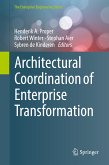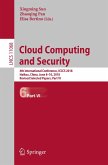Most enterprise architecture initiatives employ one of the existing system architecture frameworks such as Zachman or The Open Group Architecture Framework, but these are not well-suited for enterprise architecture in a modern, agile organization. The new approach presented in this book is based on the author's experience with large enterprise architecture efforts. The approach leverages research into complex adaptive systems and emergent behaviors, where a few simple rules result in complex and efficient enterprise behaviors.
Simplifying the task of establishing and maintaining the enterprise architecture cuts the costs of building and maintaining the architecture and frees up those resources for more productive pursuits. System implementers are given the freedom to rapidly adapt to changing user needs without the blessing of the enterprise modeling priesthood, and the architecture is transformed from a static pile of obscure models and documents into an operational framework that can be actively used to manage an enterprise's resources to better achieve business goals. The enterprise architect is free to stop focusing on building and maintaining models and start focusing on achieving business goals.
What You'll Learn:
- Refocus enterprise architecture on business needs by eliminating most of the enterprise-level models
- Delegate tasks to the development teams who do system implementation
- Document business goals, establish strategies for achieving those goals, and measure progress toward those goals
- Measure the results and gauge whether the enterprise architecture is achieving its goals
- Utilize appropriate modeling techniques that can be effectively used in an enterprise architecture
Dieser Download kann aus rechtlichen Gründen nur mit Rechnungsadresse in A, B, BG, CY, CZ, D, DK, EW, E, FIN, F, GR, HR, H, IRL, I, LT, L, LR, M, NL, PL, P, R, S, SLO, SK ausgeliefert werden.









